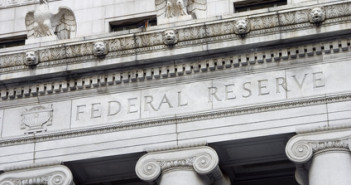- The world’s No. 1 central banker gives a lengthy testimony that will rock the US Dollar.
- There are five critical things that will shape rate expectations and the reactions in markets.
Fed Chair Jerome Powell testifies on Tuesday, July 17th and then again on Wednesday, July 18th at 14:00. The Fed Chair goes to Capitol Hill to speak before two different committees. The prepared statement for the testimony, released just ahead of the first appearance, tends to have the biggest impact. However, the Q&A sessions can also result in market-moving comments.
The Fed is content about the state of the economy with steady job gains for quite some time. In a recent radio interview, Powell said he “sleeps well at night” when he was asked about the economy. So, GDP growth is OK, but there are other things to look out for. Markets will digest Powell’s message and try to assess if a rate hike in September is already a done deal or not. Also, the path for further hikes in the longer term will be eyed.
And among all the topics covered, here are the top 5 things to look out for:
1) Trade tariffs and the economy
Trade wars between the US and basically everybody else are already taking their toll on investment decisions and prices of some products. The International Monetary Fund (IMF) has issued a warning about the damage to global growth.
So far, Powell only said that his business contact mention trade as a rising concern, but the topic received very little attention in comparison to the optimism about the economy.
The Fed Chair may expand on trade and will undoubtedly be asked on the topics by members of the Senate and the House. If he expresses concerns and says it is a critical topic for the central bank, the US Dollar may slide. If the issue remains on the back burner, the greenback will remain bid.
2) Where are the pay rises?
Jobs are aplenty, but salaries are hardly rising above inflation. According to the economic textbooks, a low supply of workers triggers wage rises. This is a global phenomenon that few can convincingly explain. A lower level of unionization, a high level of incarceration, demographic changes, and others are part of the explanations, but Powell and his predecessor Janet Yellen used words such as “mystery” or “puzzling” about the absence of pay rises.
After the most recent Non-Farm Payrolls report disappointed with wages stagnating at 2.7%, Powell will likely address the topic and will also be asked about it. If he says something along the lines of “early indications that salaries are rising,” it will boost the US Dollar. If he sticks to “puzzling,” it will be negative.
3) Is inflation seriously picking up?
After a long time in the doldrums, core prices have risen. Core CPI hit 2.3% in the report for June and the Fed’s favorite Core PCE stood at 2% in May, bang on the central bank’s target. It may edge even higher in the report for June.
Headline inflation is even higher thanks to elevated oil prices. With tariffs, prices of some goods are bouncing higher at an even higher rate.
But is it real? Some economists see the recent annual levels as the zenith, due to low prices during these months last year. Others have just seen too many false dawns.
If Powell indicates that inflation is expected to remain at current levels or even move higher, the US Dollar will feel supported. A “wait and see” approach, so beloved by central bankers, may keep the greenback under pressure.
4) Full-employment or slack?
The US Unemployment Rate stood at 4% in June, a level that causes envy in other countries. It has risen from 3.8%. Nevertheless, these excellent topline levels overstate the real situation of the job market. The participation rate, currently at 62.9%, is significantly below pre-crisis levels. Moreover, the “real unemployment rate,” U-6, is above 7%. U-6 includes discouraged people and also those working part-time but seeking full-time jobs.
Powell will likely say that the economy is “close” to full employment. A statement that we are already “at” full employment will be US Dollar bullish, while saying that there is still some room to go may weigh on the US Dollar.
5) Flattening yield curve
In the past, when bonds of higher maturities had a yield that was higher than those of lower maturities, it served as an early sign of a recession. The unnatural state at which it costs more to lend for the short term than the long run is worrying some economists.
On the other hand, the Federal Reserve still maintains a bloated balance sheet and reinvests proceeds. Its crisis years “Operation Twist” policies specifically targeted higher maturities. So, the Fed’s policies have distorted yields and the yield curve.
If Powell expresses concerns about signals from the bond markets, it is a bearish sign, while shrugging it off would be bullish.
Conclusion
Powell has a lot to talk about and may provide countless headlines. His tone may set expectations for the next rate hikes by the Fed as not all is priced in. Stay tuned.
More: Trade wars make metals heavy, but safe-haven currencies seem unsafe – correlations are changing
Get the 5 most predictable currency pairs
